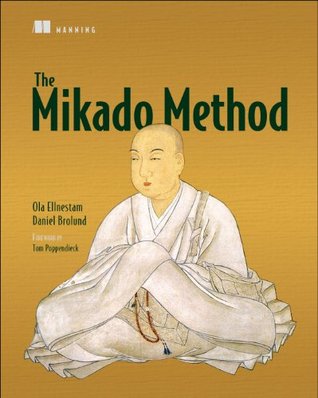The Mikado Method
[Copyright: The Mikado Method, by Ola Ellnestam and Daniel Brolund]
Summary
The Mikado Method is a framework that helps you visualize, plan, and perform business value-focused refactorings over iterations and increments. This framework can be applied for individual or team-work!
Four Basic Concepts
The Mikado Method consists of the following four major concepts:
Set a Goal
Two things need to be defined when setting a Goal, the state to be reached in the future, and the code that needs to be changed for that purpose. In other words, you are defining the start and end point of your change.
Experiment
Experiments are used to validate a hypothesis. With a complex and big codebase, it is hard to know the impact of a small change on the system. That is why, leverage on this step to make the change and observe what parts of your system breaks down!
By doing so, you can identify the pre-requisites needed to achieve your goal.
In practice, experiments are like Scratch Refactoring. Try to code your change, and see what errors you get:
- what does not build
- which tests don’t pass
Visualize
Visualization is accomplished by writing down the goal and pre-requisites from previous steps in a Mikado graph format.
Below is an example taken from the book (The Mikado Method)

[Copyright: The Mikado Method]
Undo
After visualizing a Mikado Graph, you should revert your changes to get back to the previous working state.
Then recurse the process with each prerequisite!
Unroll the changes
At some point the Mikado Graph will stop to grow. Changes at the leaves don’t have pre-requisites, so they can be done. The process to reach the initial goal is simply:
- pick a leaf change
- do it
- commit, integration, deploy it
- repeat
Dynamic Graphs
Quite often, you’ll find new pre-requisite as you’ll try to do a change. That’s not a problem. Simply update the graph, undo your change, and continue.
See it yourself
(The demo is 7 minutes between 12:25 and 19:30, and it’s viewable at x1.5 speed by David Tanzer)
(This video is of one of the sessions by Philippe Bourgau at CPP FRUG in Paris)
Different scales
We can apply the concepts of the Mikado Method at different scales. We can stick very close to the code, and build a very precise change graph. This works particularly well with static-type languages.
We can also build a graph with at a higher level, which leaves out a lot of details.
Finally, we can even apply the method to process improvements, where it becomes very similar to Toyota’s Improvement Kata.


